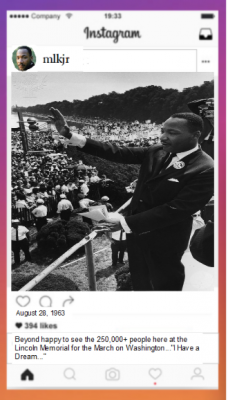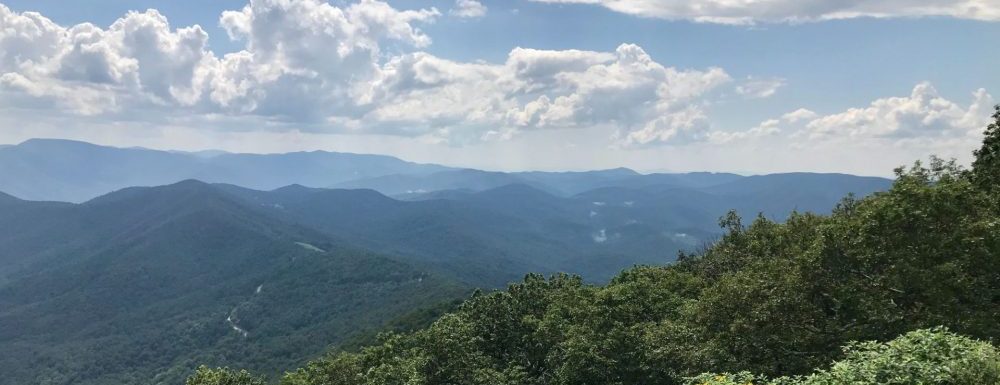Ashley Moore
Hello Dr. King, because of the courage you’ve shown throughout your life, it seemed best to show it off to others and explain how you fit the hero archetype. You’ve dedicated your life for what you believe in, just like a hero does, so I want to display key moments in your life where you show display heroic traits. You have certain events in your life that match up to a hero, starting with your motivation to start your journey. Because of your motivation, you had to cross the threshold, which led you to a completely different world. Just like any other hero, you faced unique challenges that shaped you and your career. Finally, you had to return to the threshold, despite your journey being cut short.
Your heroic journey started when the call to adventure came your way, where you had a goal to end segregation. The call to adventure the first action in a hero story that initiates the rest of the journey. When you answered the call, you were motivated by your desire to live in a world where everyone was treated equally. A famous quote of yours stating, “Three hundred years of humiliation, abuse and deprivation cannot be expected to find voice in a whisper.” I think this quote shows that you were tired of everything you and many other people had to deal with for hundreds of years, so it was no longer enough to be silent in order to fight these issues.
The next step of your journey was crossing the threshold. Crossing the threshold is when you must leave your home and cross into unfamiliar territory. In order to cross the threshold, you had to acknowledge that becoming an activist during that time required a lot of courage. Even though you didn’t necessarily go to a different, physical territory, you had to emotionally accept the dangers of your journey in order to cross the threshold. Once you put yourself out there, you knew that people would rise with or against you. Many people admire how you risked your safety in order to convey your message
 The next stage of your hero archetype was the “road of trials.” This road is referring to the many obstacles you had to overcome during your journey. An example of a challenge you faced was the 29 times you were arrested for civil disobedience and any trumped-up charge. You and your property were also attacked many times. This includes the times that you were stabbed, and your house was set on fire. Being an activist during your time came with a lot of challenges, but you were able to get through them because of your overall goal.
The next stage of your hero archetype was the “road of trials.” This road is referring to the many obstacles you had to overcome during your journey. An example of a challenge you faced was the 29 times you were arrested for civil disobedience and any trumped-up charge. You and your property were also attacked many times. This includes the times that you were stabbed, and your house was set on fire. Being an activist during your time came with a lot of challenges, but you were able to get through them because of your overall goal.
One of the final steps in a hero’s journey is the return to the threshold. Returning to the threshold takes place after the hero’s goal was completed, and it is when the hero must go back to their normal life with the knowledge he or she gained from their journey. Although your heroic journey was cut short, the return of the threshold has taken place since you died, when Americans express the rights that you fought for. Because you were assassinated, you may be unable to continue spreading your message on your own, but people today still educate others on your contribution to the world. People today continue to fight your battle in order to live in a world where everyone is accepted.
In conclusion, I would like to display your hero archetype by showing your bravery from your career. The very beginning of the heroic journey started with the call to action, and the acceptance. That was followed by crossing the threshold, where you had to leave your familiar territory and cross into a new world. Throughout your career, you also had to overcome many challenges, known as the “Road of Trials.” Finally, you had to return to the threshold in an unconventional way. Because of these connections, I think we should make an infographic to post on Instagram that individually explains each connection to the hero archetype. Another option would be to create a Twitter thread, where each individual tweet explains each of the specific connections.


Works Cited
“I Have a Dream.” Britannica School, Encyclopædia Britannica, 22 Jul. 2020. school.eb.com/levels/high/article/I-Have-a-Dream/630088. Accessed 24 Sep. 2020.
I Have A Dream. Photographer. Britannica ImageQuest, Encyclopædia Britannica, 25 May 2016.quest.eb.com/search/115_872550/1/115_872550/cite. Accessed 24 Sep 2020.
Martin Luther King, Jr.. Image. Britannica School, Encyclopædia Britannica, 7 Aug. 2020. school.eb.com/levels/high/assembly/view/89961. Accessed 24 Sep. 2020.
Martin Luther King Jr. – Nobel Lecture. NobelPrize.org. Nobel Media AB 2020. Tue. 22 Sep 2020. <https://www.nobelprize.org/prizes/peace/1964/king/lecture/>
“Martin Luther King Jr. Biography.” The Biography.com, A&E Television Networks, 2 Apr. 2014, www.biography.com/activist/martin-luther-king-jr. Accessed 24 Sept. 2020.
Witter, Brad. “Martin Luther King Jr. and 8 Black Activists Who Led the Civil Rights Movement.” Biography, 22 Jan. 2019, www.biography.com/news/martin-luther-king-jr-black-activists-civil-rights-movement#:~:text=Bayard%20Rustin%20was%20a%20close,and%20tactics%20of%20civil%20disobedience. Accessed 22 Sept. 2020.
